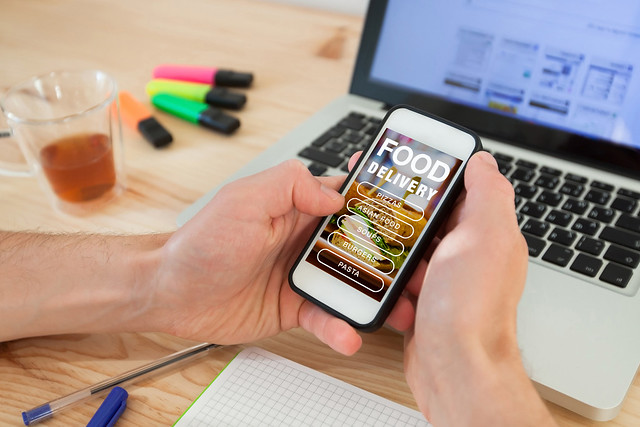
This is your first year of college, a step toward living life independently. You managed to get into a college, now what..!?! From the first day of freshman year until gradation, avoiding foodborne illness is as important as getting good grades and creating memories.
College students are often on the go and frequently get their meals the quickest and easiest way possible. College students can order anything from pizza to salad on their phones, but they are less aware of how to safely handle their take-out food. When it comes to safely preparing meals, many college students don’t know what it takes to make the grade in food safety and end up sick. While away at school, simply review the steps below when handling take-out or delivered food.
Before eating, always wash your hands thoroughly. Our latest research study shows that 97 percent of actual handwashing attempts weren’t good enough to stop the spread of bacteria. Hand washing should always include five simple steps
- Wet your hands with clean, running water (warm or cold), turn off the tap, and apply soap.
- Lather your hands by rubbing them together with the soap. Be sure to lather the backs of your hands, between your fingers, and under your nails.
- Scrub your hands for at least 20 seconds. Need a timer? Hum the “Happy Birthday” song from beginning to end twice.
- Rinse your hands well under clean, running water.
- Dry your hands using a clean towel
Learn the 2-Hour Rule: Take-out foods such as pizza, chicken, hamburgers, cut fruit, salads and party platters must be kept at safe temperatures. They can cause illness when mishandled. Bacteria grow most rapidly in the range of temperatures between 40°F and 140°F, doubling in number in as little as 20 minutes. These items should not be left out for more than 2 hours at room temperature and 1 hour in temperatures above 90°F.
If you plan to eat take-out foods at a later time, make sure you divide them into smaller portions or pieces, place in shallow containers, and refrigerate within a safe amount of time.
Refrigerator storage at 40°F or below
|
Cooked meat or poultry |
3 to 4 days |
|
Pizza |
3 to 4 days |
|
Luncheon meats |
3 to 5 days |
|
Egg, tuna and macaroni salads |
3 to 5 days |
Freezer storage at 0°F or below
|
Cooked meat or poultry |
2 to 6 months |
|
Pizza |
1 to 2 months |
|
Luncheon meats |
1 to 2 months |
Foods kept frozen longer than recommended storage times are safe to eat but may be drier and not taste as good.
Know when to reheat the leftover(s)
Leftovers are safe to eat once they have reached an internal temperature of 165°F, as measured with a food thermometer. If you decided to freeze your leftovers, use the Safe Defrosting Methods when you want to reheat. When in doubt, throw it out!
Time to download USDA’s #1 app!
In the busy hectic life of a college student, the FoodKeeper app can remind users to consume food items before they are likely to spoil. The app helps users understand how different storage methods (e.g., refrigerator, freezer, and pantry) impact the shelf life of food and beverages. With this information, users should be able to maximize food and beverage storage times, reducing food waste and ultimately saving money.
Need more food safety information? Call the USDA Meat and Poultry Hotline at (1-888-674-6854) Monday through Friday, from 10 a.m. to 6 p.m. ET, or email or chat at AskKaren.gov.
